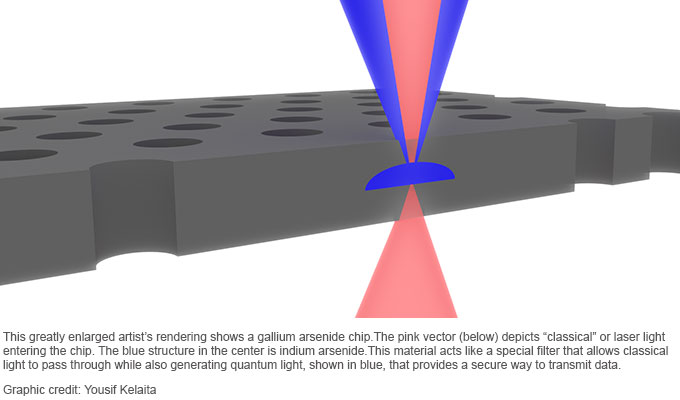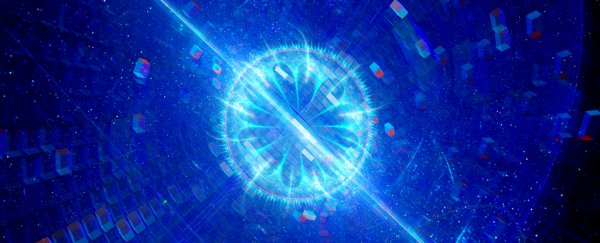Scientists are figuring out how to create a 'quantum Internet' that will be totally secure and virtually unhackable. So secure, in fact, that even if someone did manage to listen in to your private communications, you'd immediately know about it.
That's because the quantum Internet would store data in individual particles of light - known as photons - rather than beams of light, which are currently used to transmit information across our existing fibre optic networks. While information carried in classical light can be intercepted and read, photons can't be measured without being destroyed - so any kind of hacking would be impossible.
Unfortunately, creating a quantum Internet is no easy feat, and scientists have been struggling for years to find a way to efficiently beam streams of single photons - or 'quantum light'. Now a team from Stanford University may have done just that, by establishing a quantum light source that could become the basis of quantum connections.
The light source in question is a nanoscale laser, which beams light through a gallium arsenide chip, as shown below. This chip acts like a filter and allows classical light (pink) to pass through, while also producing quantum light (blue).

That works well, but once they sent that signal out, there were having trouble receiving it.
"The problem is that the quantum light is much weaker than the rest of the light coming from such a modified laser - it is difficult to pick up," explained lead researcher Jelena Vuckovic. "So, we created a way to filter out the unwanted light, allowing us to read the quantum signal much better."
That filtering works in a similar way to noise-cancelling headphones, which cancel out background noise by playing a similar frequency to ambient sounds, such as traffic or aeroplane hum. But in this case, it's background light that's being cancelled out instead of sound.
"Some of the light coming back from the modified laser is like noise, preventing us from seeing the quantum light," said one of the researchers, Kevin Fischer. "We canceled it out to reveal and emphasise the quantum signal hidden beneath."
To do this, they first worked out what the background light looked like, and then shone a similar pattern back at the light source. By tweaking how these two light sources overlapped, they were able to cancel out the background light, and reveal the hidden quantum light.
"This is a very promising development," Vuckovic said. "It provides us with a practical pathway to secure quantum communications."
The team is now building a prototype device that could be used build the foundations of a quantum Internet. And given the fact that researchers in the US have recently figured out how to teleport quantum information over a record-breaking 100 km of optical fibre, they're not the only ones making progress in the space. We can't wait.
The research has been published in Nature Photonics.
